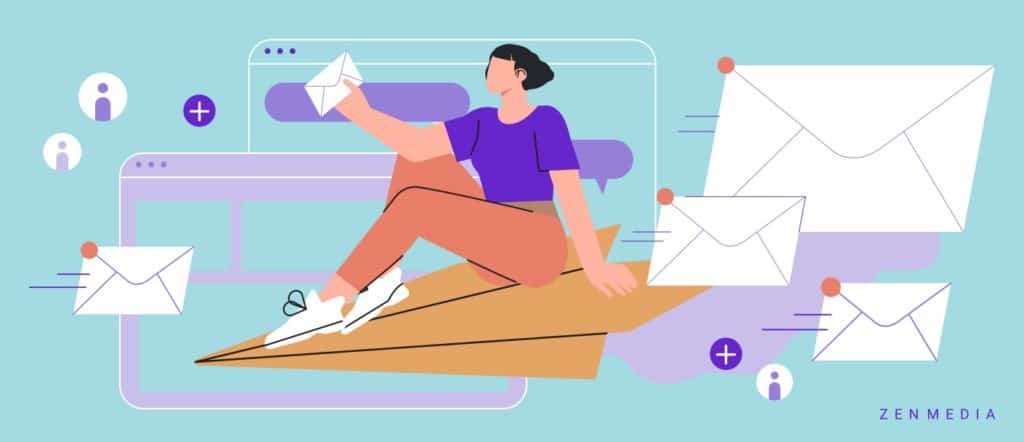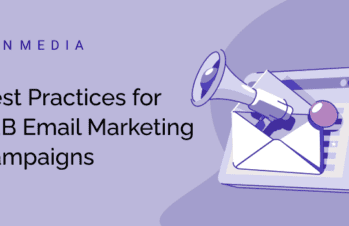Face-to-face selling isn’t as important as it used to be—why leave the house when everything you need can be found, shipped, or purchased with a click of a button, right?
On average, B2B sales teams say digital channels are twice as important now as they were a few years ago, according to McKinsey & Company.
Especially during the height of COVID-19 quarantining, buyers moved online, changing the structure of sales channels and spending more of their time in the dark funnel.
Related reading: How To Make Dark Funnel Marketing Work For You
Sales teams everyone—but especially in the B2B tech space—had to come up with new strategies to bring their target customers out of the dark and to push them forward in their journey.
Perhaps the simplest and most common tool at a salesperson’s disposal? Cold outreach emails.
Did you cringe just now, reading that?
We know.
Cold outreach, in general, has a bad reputation—constant spam and pesky salespeople trying to fool you into buying something that adds no value to your day-to-day life.
But, trust us, it’s nothing like that when it’s done the right way.
For many B2B tech and SaaS businesses, cold emailing has become the norm. When done right, it isn’t salesy and nagging. A strong email marketing campaign can help your cold audience find you, and help them work through the Research phase of the funnel. While it’s not a replacement for inbound methods, cold emails are a supplement to drive near-term growth while your inbound campaigns continue to gain traction.
Cold outreach emails can go really well or nowhere at all. With the right research techniques and the right message, you can connect with anyone and boost your ROI. Let’s examine the pros and cons of the cold email method.
Pros of the Cold Outreach Email
The notion of finding business prospects through email has been around for a long time—because it works. For busy professionals, their email inbox is a great way to catch them right after a meeting or even at the end of their workday when they’re taking one last look at their inbox. Besides its convenience, sending an email has a lot more benefits than a phone call or an ad placement and is a great form of B2B email marketing.
Reach users where they spend the most time.
The 2019 Adobe Email Usage Study, which surveyed 1,002 adults, found that professionals spend approximately five hours a day checking their email. With that being said, each cold email that reaches your prospect is another step made toward potential conversion. And even if potential buyers don’t need the products/services you sell at the exact moment they receive your email, they may remember the name of your brand or offering and search for it later, or they may search their inbox at a later date to find the old communication.
Related reading: 11 Email Marketing Strategies That Guarantee a 50% Click-to-Open Rate
The lifecycle of an email is longer than that of a phone call because it can stick around in prospects’ inboxes. And if you get an “open” on a cold email, you can use that data to begin nurturing a prospect. Whereas a missed phone call can mean a variety of things, from prospects not answering calls from numbers they don’t know to prospects just not having the time to talk in that moment.
Save money and time.
Since emails cost almost nothing to send, you can gain an extremely high return on investment for your email marketing campaigns. Unlike cold calls, emails provide easily accessible and relevant information about your brand, and you can also add attachments—an underrated feature in cold email outreach.
Attach a document, infographic, or promo material to tell a more detailed story about you, your company, and the product or service you have to offer. Your readers can open the message on their time, and if your copy is written well, they’ll be more inclined to follow your CTA and head to your website.
An email waits on the recipient.
We’ve all scrolled past an ad on social media—losing it forever in the digital world (that is, unless a savvy B2B paid ads expert has something to say about it).
Using your social platforms creates the potential for your pitch to be seen by thousands of people, but if no one’s checking their timeline in that limited window, they’ll likely miss it. This is why, for social media marketing, persistence, timing, and consistency are all so important.
Related reading: Ultimate Guide to B2B Social Media Marketing
With an email, recipients can read your message when they’re ready—it’s not going anywhere.
However, just because it is easy for them to respond doesn’t mean they will. Don’t make the common mistake of just thinking you need to continuously send emails to the same people. It’s not a numbers game. There is a process.
Cons of the Cold Outreach Email
So we know cold outreach emails can be effective and that they are faster, less disruptive, and easier to scale up and measure.
So why do they have such a bad rep?
First impressions are hard.
With cold outreach emails, you’re basically contacting complete strangers and trying to convince them to purchase your product. What you say has to resonate with them. They need to read that email and actually feel compelled to learn more. If they can’t see the value you bring to the table, your email will enter the digital wastebin, and they’ll move on to the next message.
And this goes without saying, but don’t rely on clickbait to get those open rates up.
You may spike open rates, but you’ll also increase the number of people who will never buy from you due to the deception (and annoyance).
To make the perfect first impression, your headline has to be interesting enough to get a click, but not so outlandish that you can’t deliver on it. It’s a tricky balance.
Related reading: 8 Email Marketing Mistakes to Avoid in 2022
There’s a whole lot of competition.
Pretty much anyone can send a batch of emails these days (even the spammy, poorly written ones). The person you’re trying to reach already has hundreds of emails in their inbox—many of which won’t ever be opened.
It only takes a couple of seconds for someone to delete your message. And worse, if you don’t follow email marketing best practices, your emails could fall victim to spam filters and never get in front of your prospects’ eyes.
Timeliness is not a priority.
Email exchanges are not as dynamic as telephone conversations, and nothing beats chit-chatting in person. One of the key reasons for this is simply that there isn’t urgency.
When you’re talking in person or on the phone, decisions are made right then and there. Maybe the decision your prospect makes is that they need more time or aren’t interested—bummer—but at least you know, right then and there, where you stand.
With email communication, you don’t know whether prospects will reply at all, and for those that do, the responses could come at any time, from seconds after receipt to a month later. You can always send a follow-up email, but following up on an unopened or opened-but-not-responded-to email means more effort on your part without any guarantee of return. And too many follow-ups can quickly turn into spam.
The reality is that cold emailing is one cog in your sales and marketing strategy machine. When done effectively, it can be an incredibly effective way to get traffic to your website, increase brand awareness, and help buyers begin their journey through the sales funnel. When done poorly, it can make your brand look annoying, dishonest, and pushy.
As with any marketing tactic, the key here is having the right strategy and being able to execute it precisely.
Need help with your email marketing strategy? We’re happy to help!




